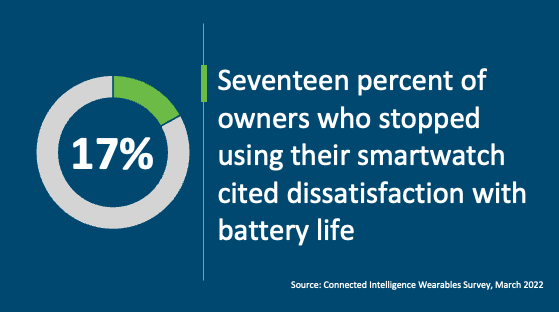
Cityzens’ scarf
Manchester City Football Club (soccer to most of you) and long-time partner, Cisco, have announced a prototype smart scarf for fans. The blue and white striped scarf comes equipped with an EmotiBut sensor that tracks heart rate, body temperature, movement and an EDA sensor which Cisco tags as a “lie detector”. Man City recently tested out the scarf on six fans and recorded what it terms as 120 “moments of interest” for each fan.
The NPD Take:
- The wearables movement – beyond wrist worn devices – has been incredibly slow to take off, so the positive here is that Cisco is trying to push that forward. Having said that, it is really unclear what the benefit is for fans as this seems to be a data source for the Club, to better understand what makes its fans “tick”. And since Man City won the Premier League, they shouldn’t need a scarf to see a happy bunch of Cityzens.
- For clothing based wearables, we need to see more than simply a poor replication of smartwatch functionality. The scarf needs to do something visual perhaps in order to convince the fans that there is benefit, rather than just someone tracking their emotions.
The Pro era is (possibly) upon us
We are just a few months away from Apple’s usual announcement cycle for the next gen Watch. No surprise then that the rumors and predictions are starting to swirl around. The most compelling one is that Apple will launch a “Pro” version of the Watch, just as it did with the iPhone. The rumored Pro Watch will come with a slightly larger screen (2 inch vs the usual 1.9 inch), with a possible design overhaul (although we really wouldn’t expect much of a design impact as the shape will remain the same). We do expect that Apple will include the expected temperature sensor in the device (very useful for early detection of Covid and other illness). And most importantly, a slightly bigger watch means the potential for a bigger, longer lasting battery.
The NPD Take:
- The smartwatch market is showing all the signs of a flat market, at least in terms of ownership growth. As a result, Apple (and others) need to build devices that at least convince the existing customer base to upgrade and a Pro model with a longer battery life will certainly help with that.
Glassholes 2.0?
Google plans to test its new AR glasses in the real world, starting in August. But the company is starting cautiously, with plans to try out the AR glasses with a handful of Googlers and trusted testers. The new device will have in-lens displays, microphones and cameras. However, unlike the original devices, there will be limitations on what the microphones and cameras do. There will be no picture taking or video; rather, the camera is there to help translate a menu, or aid in showing you directions.
The NPD Take:
- We remain bullish on the potential for AR, as long as it is done right with sleek glasses and smart functionality. By that we mean that this should not become a sneaky camera, but rather another screen for the wearer. Directions, translations and so on are all useful enhancements to our daily use cases… yet another camera… well, we saw how that worked out the first time.